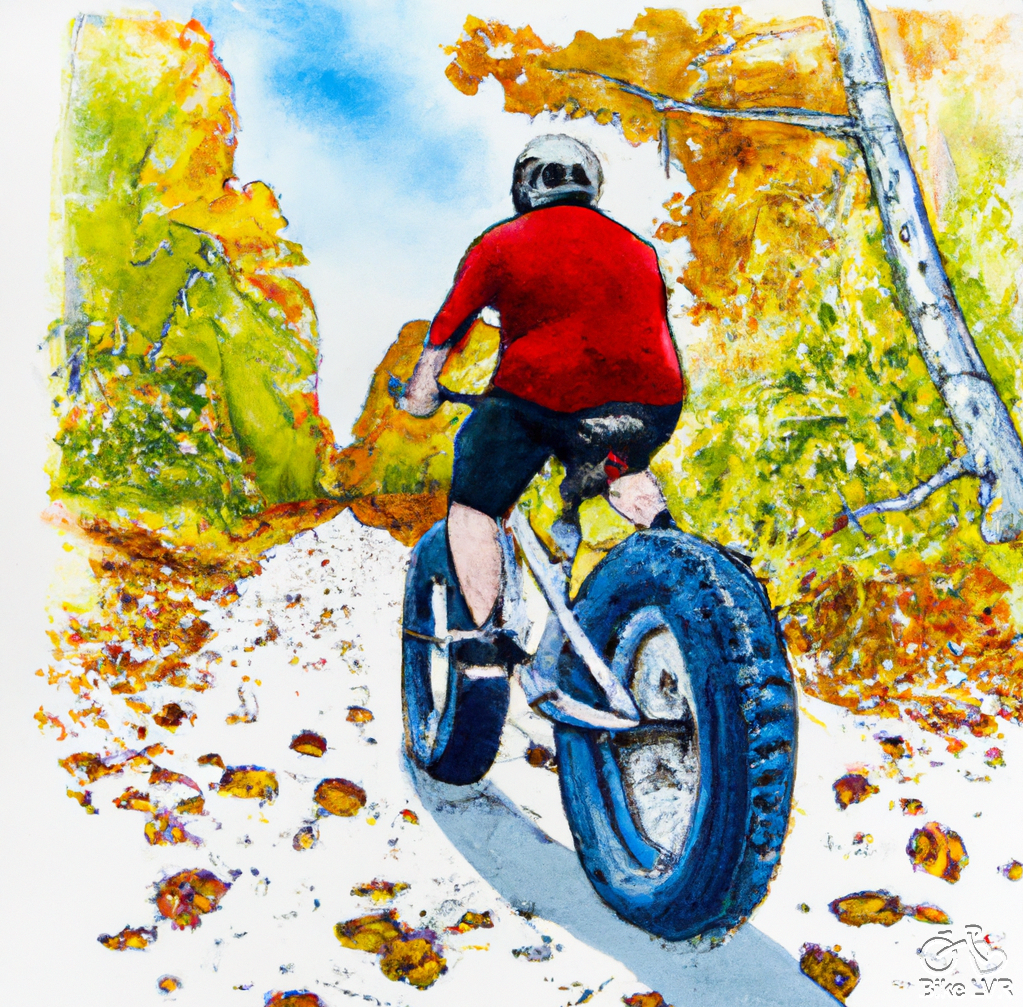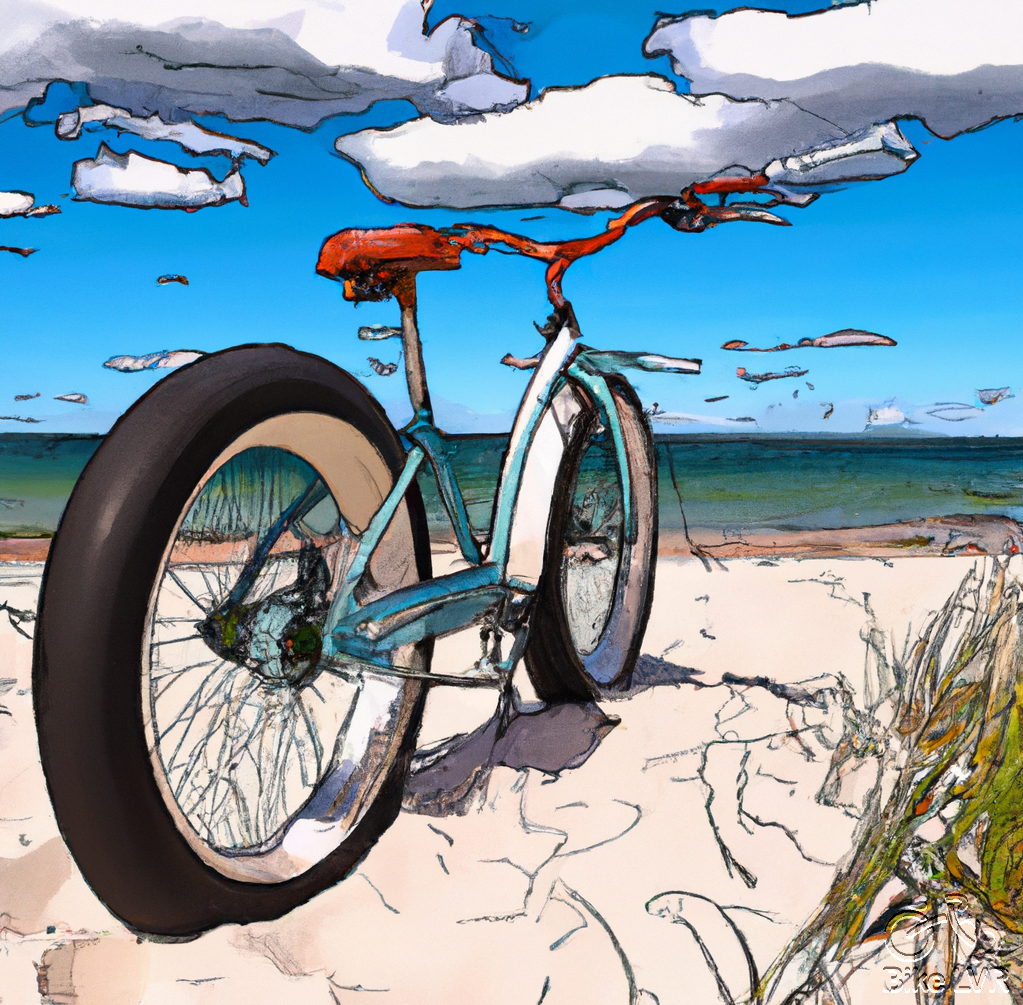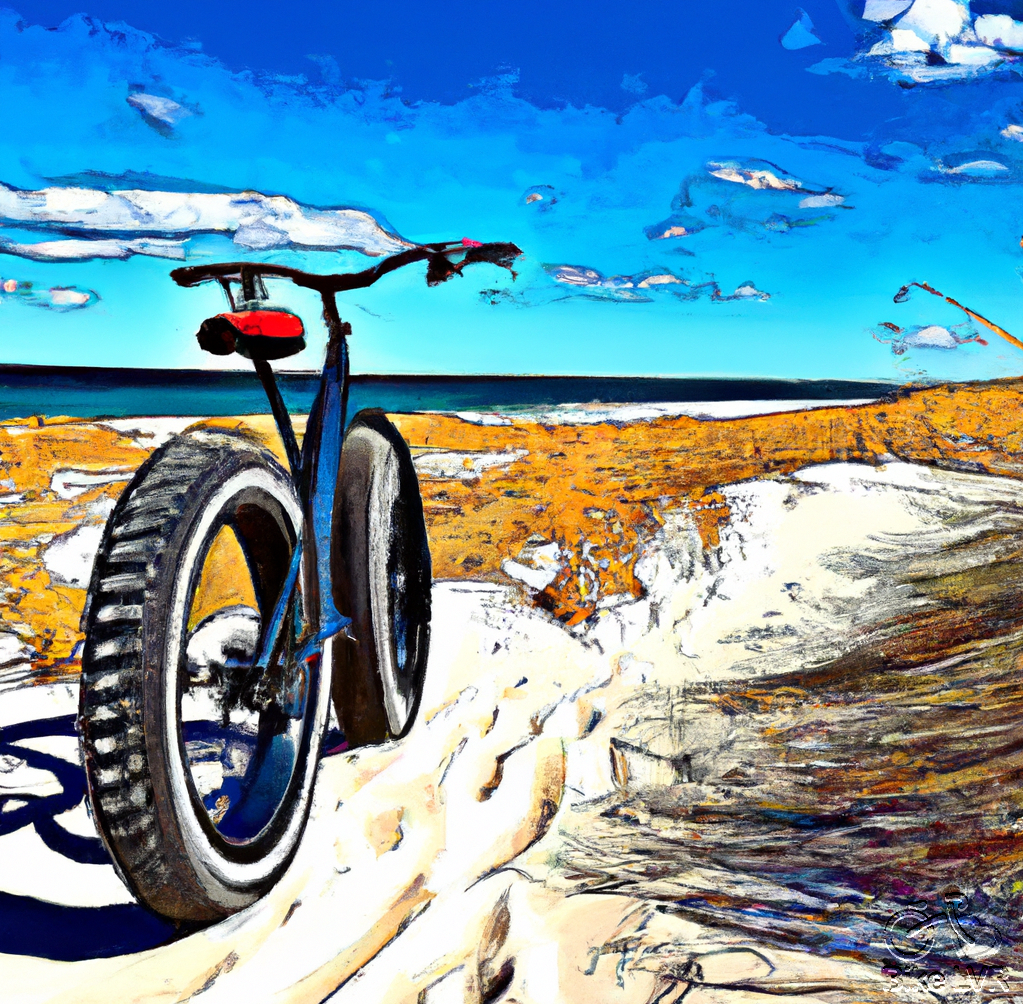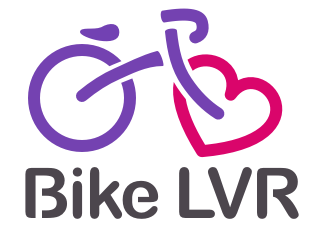
Can I add fat tires to my regular bike?
Sure, you can make the switch to fat tires – with some knowledge and a bit of elbow grease or the help of your local bike shop. But while they’re becoming increasingly popular amongst cyclists everywhere, what do YOU really know about them?
Have you ever found yourself daydreaming about cycling through sandy beaches or snowy trails with the same ease as gliding over smooth pavement? Enter the world of fat tires on bikes. These extra-wide tires offer unparalleled traction and stability, perfect for off-road adventures or that rough city ride.
The most important step in fitting fat tires to a regular bike is to make sure the frame and fork have enough clearance for the new tires. The existing wheel size will be a good indicator of whether or not you need to look into replacing other components as well, such as brakes and derailleurs. Fat tires have become so popular that most mountain bike manufacturers are putting them on their new bikes. You can even find them on electric bikes.
But can you fit fat tires on a regular bike?
Let’s explore the compatibility, challenges, and step-by-step process for this bike transformation.

What Are Fat Tires?
Fat tires get their name from larger fat bikes. As the name implies, they are wider and thicker than regular bike tires. A symphony of rubber and air, fat tires bestow their grace upon the cycling world with their voluptuous form and unparalleled versatility. These rotund marvels, boasting widths that span a generous four to five inches, eclipse their slender counterparts in both size and prowess. Riders of sand, snow, city streets, and rocky terrain, fat tires have captivated the hearts of intrepid bikers and off-road enthusiasts alike, inviting them to waltz through landscapes once thought impassable, all while maintaining their balance and style. With an unwritten promise of comfort, stability and traction, fat tires have become a must-have for many cyclists.

What Are Fat Tires Used For?
Fat tires have many advantages and a few disadvantages. They are slightly more expensive than regular bike tires. However, that should be expected considering they are bigger and more versatile. They are also great for exploring, built for comfort, and make a good workout.
On the downside, they are heavier and can be difficult to maneuver on certain terrain. In addition, they require more effort to pedal due to the increased weight.
Why fat tires are better?
In the realm of off road cycling, fat tires emerge as champions, defying terrain with their unyielding tenacity and poise. Their generous girth endows them with a remarkable ability to float atop surfaces that would leave narrow tires floundering. Embracing sand, snow, and mud, these full-bodied wonders cushion each ride with a tender, forgiving touch, while their expansive contact patches foster traction and stability.
If you’re the kind of cyclist who loves conquering new terrain and taking things off-road, then fat tire bikes are a good choice. They ensure a comfortable and stable ride in most conditions – even icy ones if they come with studs. But if your cycling adventures take place on roads or streets instead of trails, most riders opt for bike tires with thinner rims to keep it smooth sailing.
Whatever type of bike you choose, make sure it is fitted correctly to ensure that your ride is as comfortable and safe as possible. Enjoy the journey!
They Are Made for Exploration
Fat tires are designed to enhance where you go biking. You can take them on almost any terrain. The deep tread provides better grip and traction than a standard bike tire. A few examples of where you can ride on fat tires are:
- Sandy beaches
- Muddy paths
- Steep and winding hills
- Dense snow and slippery ice
- Rough city streets and pavement
The width allows extra contact surface and reduces pressure on the rider and the bike. You also do not have to fear skidding on loose surfaces.

They Are Built for Comfort
Fat tires are still comfortable at pressures as low as 15 to 10 psi. Fat bikes are even known to be highly rigid because they do not need a suspension system; it is already built into the tire. Riding at low pressure on fat tires makes them prone to bouncing more, which allows the rubber to absorb the shocks. The result is a very comfortable ride through rough terrain.
They Are a Great Workout
Fat tires can make picking up speed a bit more challenging. That may not sound like an advantage to everyone, but to the exercise enthusiasts that want a better workout on their bikes, it is a bonus.
The size and weight make them heavier than standard bike tires, and riding on low pressure can make pedaling more difficult. You have to put in more work to pick up speed. However, it is a great workout for your upper and lower body.
They Are Great for Beginners
The additional balance and stability provided by fat tires make them great for riders that are new to off-roading or biking in general. Taking on more challenging terrain when you have smaller tires with less grip can stifle your confidence. You have to dodge obstacles, such as rocks and roots, but with fat tires, you can ride right over them. It helps to build confidence in rookies and can be practical for older children.
Are There Any Limitations?
As previously mentioned, fat tires can make your bike heavier and slower. They are also more expensive than regular tires. Despite all their advantages, they do have some limitations:
- They are not best on smooth pavement. While they may be great for rough terrain, putting fat tires on your bike for an urban commute could make it more difficult to ride. They are designed to grip loose ground, therefore, the tread pattern adds resistance and may not be idea for your commute.
- Tire pressure need to be adjusted for your terrain. You have to monitor tire pressure closely with fat tires because it governs how your bike interacts with the ground more strictly than a standard tire. If the psi is too high, your ride will be bumpy and uncomfortable. If it is too low, you risk damaging your rims.
- They are harder to pedal as they have more surface area. While this is great for exercise, it makes using your bike to commute or hill climb more challenging.
- They are sometimes more difficult to store. Fat tires take up more space and make your bike heavier. If you live in a small, urban apartment with limited space, storage could prove challenging.
Most of the limitations are easily avoided by knowing why you want fat tires. If you plan to convert your bike so you can take it off-road on the weekends, it is a great idea. If you use your bike primarily on smooth, paved surfaces and might occasionally go off-roading, replacing regular tires with fat tires may not be beneficial unless you just want a good workout on your commute.

The Fat Tire Compatibility Conundrum
Before diving headfirst into the world of fat tires, it’s crucial to determine whether your bike can accommodate them. Typically, a standard bike frame and fork are designed to fit a specific tire size. Factors such as clearance, wheel hubs, and brakes will ultimately decide if a regular bike can make the leap to a fat-tire setup.
The Art of Compromise: Frame and Fork Clearance
One primary concern when attempting to add fat tires to a regular bike is the frame and fork clearance. Fat tires are designed to be anywhere between 3.7 to 5 inches wide, which may be too large for most standard bike frames. If you’re serious about making the switch, you’ll need to assess the clearance of your bike’s frame and fork to see if they can handle the extra width. If not, you may need to consider other alternatives, such as a mid-fat tire or a custom frame designed for fat tires.
Rolling with the Right Hubs
Wheel hubs play a critical role in tire compatibility. To install fat tires, you’ll need wider hubs to accommodate the larger tire size. Traditional bikes typically use 100mm front hubs and 135mm rear hubs, while fat bikes require 135mm to 150mm front hubs and 170mm to 197mm rear hubs. You may need to purchase new wheels with the appropriate hub spacing, or explore hub adapters to make the switch.
Putting a Brake on Compatibility
Brakes are another vital consideration. Fat-tire bikes often feature disc brakes due to their increased stopping power and clearance for wider tires. If your regular bike has rim brakes, you will likely need to upgrade to disc brakes or explore other options, like cantilever brakes, that can accommodate the extra tire width.
How Are Fat Tires Installed?
Installing fat tires on a standard mountain bike can be tricky. It requires much more preparation than simply removing the tires and replacing them with fat tires.
Every mountain bike is different, and it can be difficult to fit a significantly larger tire on a standard frame. We recommend visiting your local bike shop if you have any questions or feel this is beyond your abilities.
Can You Put Fat Tires On Any Bike?
No. Being able to fit fat tires on your bike will depend on your current setup and frame. Let’s look at what you can do to add fat tires.

1) The Preparation
The first step in the installation process is to determine the limitations of your bike’s current setup. The three parts of the bike you need to look at are:
- The rim is the outer edge of the wheel that serves two functions: to hold the tire in place for all bikes and provide a surface for braking on rim-brake bikes.
- The fork is made of two blades that are joined at the top to make a crown. It holds the front wheel.
- The chainstay consists of a pair of metal tubes on the back of the bike frame that locks the rear axle in place with the bottom bracket.
Ideally, you can replace the regular tires with the fat tires with little alteration. For that to be possible, the fork needs to have enough width between the two blades to accommodate a wider tire.
2) The Upgrades
If your current setup is too small to fit fat tires, you will need upgrades to make the conversion work. You can invest in new rims that can hold the wider tire and a wider fork. You may also need to replace the chainstay if the new tire compromises the stability of the chain.
Once you make the decision to convert, it is best to fully commit. Trying to make the process as cheap as possible could have very negative results. A strong carbon fork will make the ride smoother and kill vibrations. Lighter rims will make the bike easier to ride, and if you aren’t confident in your ability to handle the work on your own, pay to have a professional take care of it for you.
Are Fat Tires For You?
Transforming your regular bike into a fat-tire machine may not be a simple endeavor, but it’s an exciting journey that opens up new possibilities for adventure. Assess your bike’s compatibility, invest in the necessary components, and follow our step-by-step guide to embrace the world of fat tires with confidence. Happy trails!
FAQ on Fat Tires:
Can I Put Fat Tires on My Road Bike?
Yes, you can put fatter tires on your road bike, but the feasibility of this upgrade largely depends on your bike’s frame and brake caliper clearance. The two main considerations are whether your bike frame has enough clearance for wider tires and whether your brake calipers can accommodate them. Always consult your bike’s manufacturer or a Local bike mechanic before making any modifications to ensure safety and compatibility.
How Will Fatter Tires Affect My Bike’s Performance?
Fatter tires can impact your bike’s performance in several ways. They can provide more comfort as they absorb road shock better than thinner tires. They may also offer improved grip, particularly in wet or off-road conditions. However, fatter tires can increase rolling resistance, potentially reducing your speed on smooth surfaces. They may also add weight to your bike, which can affect acceleration and climbing performance.
- Fatter tires can increase comfort and grip but may reduce speed and add weight to your bike.
- They can increase rolling resistance, potentially slowing you down on smooth surfaces.
- The effect on performance will vary depending on your riding conditions and style.
What are the best fat tires for heavy bike riders?
Top-notch fat tires suitable for heavy bicyclists are characteristically broad, boast an effective tread design, and are constructed from long-wearing materials. Some of the prime choices of fat tires for substantial bike riders are:
- Schwalbe Jumbo Jim Addix SnakeSkin
- Surly Lou Folding
- Surly Bud Folding
- Maxxis Minion FBF Dual Compound
- Specialized Ground Control Fat
These tires all share common features – they are broad and possess an efficient tread design. This allows them to deliver ample traction and stability on various terrains. Additionally, their durable construction aids in resisting damage or punctures.
Alongside the above-mentioned tires, there exists a plethora of other excellent fat tires in the marketplace. When selecting fat tires, the style of biking you’ll be doing should be a paramount consideration. For instance, if your journey involves snow or ice, you’ll require tires with a tread pattern specifically engineered for these conditions. On the contrary, if you’re trail-riding, tires with a tread pattern suitable for hard pack or gravel would be the ideal choice.
The weight of the biker is another critical factor when picking fat tires. For heavier bikers, tires crafted to support their weight are necessary. The aforementioned tires are all tailored to accommodate the weight of heavier riders.
Aspects to contemplate when opting for fat tires for weighty bike riders:
- Width: Fat tires are usually 4 inches or broader. A wider tire ensures enhanced flotation and stability, which can prove advantageous for hefty riders.
- Tread pattern: The tread pattern on a fat tire impacts its traction and performance on diverse surfaces. A tire with an intricate tread pattern will offer superior traction in snowy or muddy conditions, whereas a tire with a less complex tread pattern will glide more smoothly on pavement.
- Material: Fat tires are primarily composed of rubber or Kevlar. Rubber tires are cost-effective but fall short in terms of durability compared to Kevlar tires. Although Kevlar tires are pricey, they are substantially more durable and resist punctures better.
- Weight: Fat tires are weightier than conventional (narrow) tires. While this might cause the bike to feel lethargic on hard pack or pavement, it also enhance stability Fat tires provide a larger contact patch with the ground, allowing them to grip better and maintain traction on loose surfaces, such as sand or snow.
- Durability: Fat tires tend to be more durable because of their increased air volume and thicker rubber casing
Can i put fat tires on my beach cruiser bike?
If you’re unfamiliar with fat tires, they are significantly wider (typically about 4 inches or more) than standard tires. This extra width provides increased surface area, which in turn gives the bike better traction and stability on various terrains.
For beach cruisers, this increased traction and stability can be a game changer. Beach cruisers are often ridden on loose sand, a terrain that can be challenging for normal tires to navigate. Fat tires make it easier to ride on sand, snow, mud, and other soft or slippery surfaces. They provide better floatation, preventing your bike from sinking into the sand and making your beach ride smoother and more enjoyable.
But, it’s essential to note that not all beach cruisers can accommodate fat tires without some adjustments. The main factors you’ll need to consider are:
- Frame and Fork Width: Your beach cruiser’s frame and fork must be wide enough to fit the fat tires. If they aren’t, the tires could rub against the frame or fork, which can lead to damage and reduce your bike’s performance.
- Brake and Drivetrain Compatibility: The brakes and drivetrain might need to be adjusted or replaced to accommodate the wider tires. For example, if your bike has rim brakes, they may not reach around a fat tire, and you might need to upgrade to disc brakes.
Are fat tires good for sand bikes?
Yes, fat tires are good for bikes that ride on sand. The wider tires provide more surface area, which helps to distribute the rider’s weight and prevent the bike from sinking into the sand. Fat tires also have more air volume, which helps to absorb bumps and provide a smoother ride. This makes fat bikes ideal for riding on beaches, dunes, and other soft surfaces.
What kind of rims for a fat tire bike?
There are two main types of rims for fat bikes: aluminum and carbon fiber (steel rims are less common). Aluminum rims are more common and less expensive, while carbon fiber rims are lighter and stronger but expensive.
Aluminum rims are a good option for most riders. They are strong enough to handle the weight of a fat bike and the rigors of off-road riding. They are also relatively inexpensive, making them a good value for the money.
Carbon fiber rims are a good option for riders who are looking for the lightest and strongest possible rim. They are also more responsive than aluminum rims, making them a good choice for riders who want a more aggressive ride. However, carbon fiber rims are more expensive than aluminum rims and run $250 to $3000+ per rim 👀
Are fat bike tires harder to pedal?
Yes, fat bike tires are harder to pedal than regular bike tires. This is because fat bike tires are wider and have more air volume. The wider tires have more surface area, which creates more friction with the ground. This requires more effort to pedal the bike forward.





